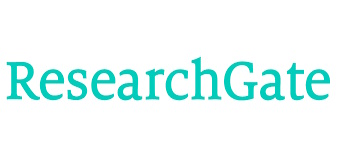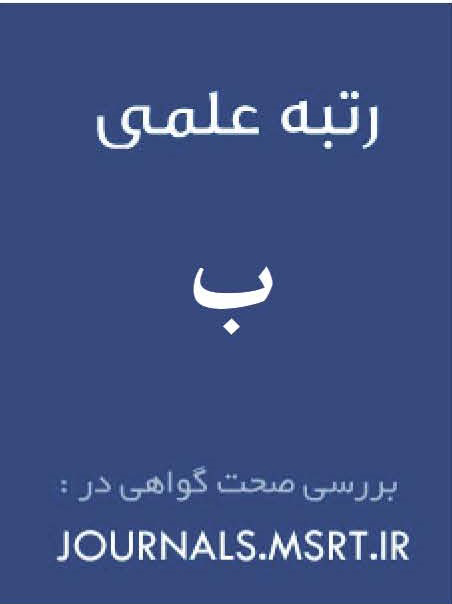شناسایی شاخصهای مدیریت بحران رسانههای اجتماعی در آموزش و پرورش استان مازندران
کلمات کلیدی:
مدیریت بحران, رسانههای اجتماعی, آموزش و پرورش, استان مازندرانچکیده
هدف پژوهش حاضر شناسایی و تبیین شاخصهای کلیدی برای مدیریت بحرانهای ناشی از رسانههای اجتماعی در نظام آموزش و پرورش استان مازندران است. این مطالعه کاربردی با رویکرد کیفی و مبتنی بر طرح آمیخته اکتشافی انجام شد. در گام نخست، دادهها از طریق مرور نظاممند مبانی نظری، پیشینه پژوهشهای داخلی و خارجی و تحلیل اسناد مرتبط گردآوری گردید. سپس با روش نمونهگیری هدفمند و رعایت اصل اشباع نظری، ۱۱ نفر از خبرگان حوزه مدیریت بحران، رسانه، فناوری اطلاعات و آموزش و پرورش انتخاب شدند. ابزار گردآوری دادهها مصاحبه نیمهساختاریافته بود. دادهها با استفاده از روش تحلیل مضمون و کدگذاری سهمرحلهای (باز، محوری و انتخابی) در نرمافزار مکسکیودا تحلیل و بهمنظور تأیید و اصلاح شاخصها، فرایند دلفی چندمرحلهای با مشارکت متخصصان تکمیل شد. اعتبار و پایایی دادهها از طریق بازبینی اعضا، ناظر بیرونی و آزمون توافق بین کدگذاران تأیید گردید. تحلیل دادهها منجر به شناسایی ۱۳۰ مفهوم اولیه و پس از پالایش ۹۴ مفهوم نهایی شد که در ۳۱ مؤلفه کلیدی سازماندهی گردید. این مؤلفهها در نهایت در قالب ۷ بعد اصلی مدیریت بحران رسانههای اجتماعی طبقهبندی شدند: پیشگیری و آمادگی، شناسایی و تشخیص بحران، واکنش و پاسخگویی، بازیابی و بازسازی، فناوری و زیرساختهای اطلاعاتی، اجتماعی–فرهنگی، و قوانین و سیاستگذاری. این مدل چرخه کامل مدیریت بحران از آمادگی تا بازسازی و یادگیری سازمانی را پوشش میدهد. مدل پیشنهادی پژوهش چارچوبی جامع برای مدیریت نظاممند بحرانهای رسانهای در آموزش و پرورش ارائه میدهد و میتواند به تصمیمگیری آگاهانه، ارتقای تابآوری رسانهای و حفظ سلامت فرهنگی–اجتماعی دانشآموزان کمک کند.
دانلودها
مراجع
Ansari, H., & Izadi, M. (2023). Social Media and Soft Warfare in the Field of Education: Innovative Achievements in Human Sciences Studies. Journal of Human Sciences Studies, 6(63), 1-16. https://jonahs.ir/showpaper/8446663
Bagherpour, M. (2022). The Role of School Administrators in Virtual Networks: Opportunities, Threats, and Effective Solutions. Horizons of Human Sciences, 64(15), 89-103. https://www.noormags.ir/view/fa/articlepage/1982680
Chen, L., Chen, J., & Xia, C. (2022). Social network behavior and public opinion. Journal of Information Security and Applications. https://doi.org/10.1016/j.jisa.2021.103060
Chenari, M., & Shabestani, A. (2021). Predicting the Level of Familiarity with Ethics in Cyberspace Using Media Literacy and Technological Competencies. Ethics in Science and Technology, 16(1), 155-158. http://ethicsjournal.ir/browse.php?a_code=A-10-1182-75&slc_lang=other&sid=1
Farhang, S. (2025). Presenting a Model for Enhancing Crisis Management with Emphasis on the Role of Social Media. Journal of Crisis Management, 14(1), 37-52. https://www.joem.ir/article_721106.html
Faridi Esfanjani, J., Saadati Shamire, A., & Rezaei, S. (2024). Identifying Challenges and Opportunities Facing the Educational System in Cyberspace to Overcome Crises: A Phenomenological Study. Information Technology and Communications in Educational Sciences, 56(22), 89-110. https://www.noormags.ir/view/fa/articlepage/2179211/
Figueroa, P. (2017). Disasters and Social Crisis in Contemporary Japan: Political, Religious, and Sociocultural Responses. Pacific Affairs, 90(1), 145-147. https://www.jstor.org/stable/44876158
Fornian, A., Naderpour, B., Bolandian, G., & Darabi, A. (2022). Examining the Therapeutic Role of Virtual Social Networks on Mental Health and Violence among Youth. Razi Journal of Medical Sciences, 29(8), 17-25. https://www.sid.ir/paper/1123283/fa
Ghanbari, A. (2024). Crisis Management in Education: Strategies for Educational Administrators. First International Conference on Psychology, Educational Sciences, Management, and Social Sciences, https://civilica.com/doc/2053580/
Hamid, P. D., Nurmala, M. D., & Wibowo, B. Y. (2023). The Social Media Crisis Communication Model: A Solution to the Social Media Crisis. Journal Pendidikan Indonesia Gamelan, 3(1), 114-122. https://doi.org/10.1063/5.0120756
Korn, C. (2023). Media coverage of organizations in critical situations University of Germany]. https://www.researchgate.net/publication/261362757_Media_coverage_about_organisations_in_critical_situations_-_Analysing_the_impact_on_employees
Lee, C. T., Chen, T. W., & Tsai, M. C. (2022). Dynamic weight status changes and peer lifestyles in early adolescence: A social network analysis on a longitudinal cohort of Taiwanese youth. Obesity Research & Clinical Practice, 16(6), 470-475. https://doi.org/10.1016/j.orcp.2022.10.004
Leslie, G. R., Larson, R. F., & Gorman, B. L. (2020). Introductory Sociology. Oxford University Press. https://link.springer.com/content/pdf/10.1007/978-1-349-14741-0.pdf
Li, Y., & Liu, Q. (2021). A comprehensive review study of cyber-attacks and cyber security; Emerging trends and recent developments. Energy Reports, 7, 8176-8186. https://doi.org/10.1016/j.egyr.2021.08.126
Rajabi, M., & Farahmarzi Grousi, S. (2023). Investigating the Impact of Virtual Social Networks on the Academic Performance of First-Year Middle School Students in the Sajaseroud Region for the Academic Year 2022-2023. Sixth National Conference on Innovative Technologies in Education, Psychology, and Counseling, Tehran. https://jti.atu.ac.ir/article_10679.html
Torossian, R. (2025). Exploring how crisis communication strategies adapt to the high speed of information dissemination on social media. Global Educational Studies Review, 58(1), 232-246. https://books.google.com/books?hl=fa&lr=&id=bz08DhXc4u0C&oi=fnd&pg=PP1&dq=+Exploring+how+crisis+communication+strategies+adapt+to+the+high+speed+of+information+dissemination+on+social+media.+Global+Educational+Studies+Review&ots=qVZ4jWxDJ4&sig=WJdrSiH5iJ5WpIttBU1V8vz2jvo
Torossian, R. M. (2025). Exploring the relationship between corporate reputation and the public's crisis communication on social media. Public Relations Review, 44(1), 56-64. https://doi.org/10.1016/j.pubrev.2017.12.006
Verinder, B. (2025). Examining critical crisis management skills in the educational environment. International Journal of Educational Development, 32(3), 482-492. https://journals.sagepub.com/doi/abs/10.1177/14782103221133892
Yubero, S., Navarro, R., Elche, M., Larrañaga, E., & Ovejero, A. (2017). Cyberbullying victimization in higher education: An exploratory analysis of its association with social and emotional factors among Spanish students. Computers in human Behavior, 75, 439-449. https://www.sciencedirect.com/science/article/pii/S0747563217303588
دانلود
چاپ شده
ارسال
بازنگری
پذیرش
شماره
نوع مقاله
مجوز
حق نشر 2025 Seyedeh Kosar Taheri Otaghsara (Author); Reza Uosefi Saeedabadi; Maryam Taghvaee Yazdi (Author)

این پروژه تحت مجوز بین المللی Creative Commons Attribution-NonCommercial 4.0 می باشد.






